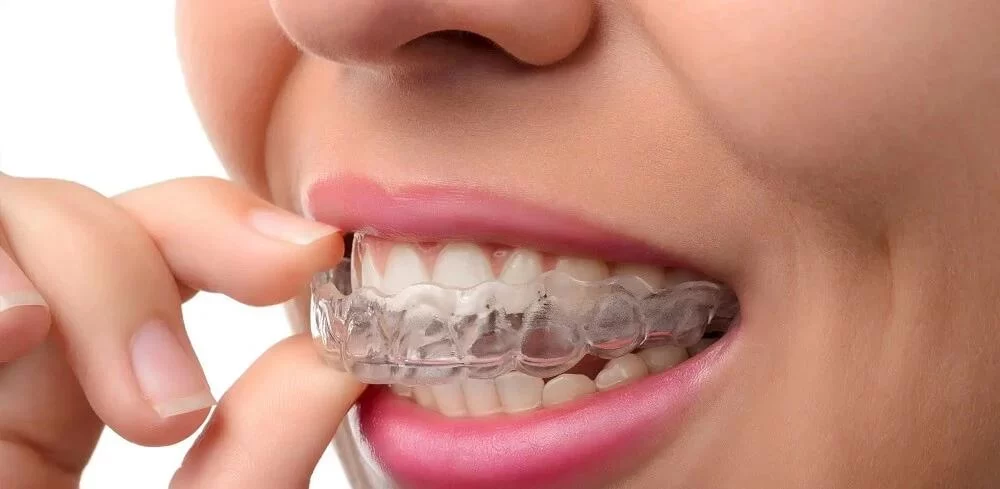
How to Fix Gaps in Your Teeth Without Braces: Effective Solutions You Need to Know
- 1. Understanding Teeth Gaps and Their Causes
- 2. Effective Solutions for Fixing Teeth Gaps Without Braces
- 3. How Veneers Can Help Close Gaps in Your Teeth
- 4. Tooth Bonding: A Quick and Effective Solution for Small Gaps
- 5. When to Choose a Dental Implant for Gaps
- 6. The Role of Lifestyle Changes in Reducing Teeth Gaps
1. Understanding Teeth Gaps and Their Causes
Teeth gaps are a common dental concern for many people. Personally, I’ve had a noticeable gap between my front teeth since childhood. While some individuals embrace the unique feature, others may feel self-conscious or desire a solution. Gaps in teeth, also known as diastema, can occur for various reasons:
- Genetics: A common cause of gaps is genetic inheritance, where your teeth may simply be too small for your jaw size or you may inherit a tendency to have gaps.
- Missing Teeth: If a tooth has been lost, especially in adults, the surrounding teeth may shift, leaving a gap.
- Jawbone Size: In some cases, people have larger jawbones, which may leave extra space between teeth.
- Habits: Habits like thumb sucking during childhood can cause gaps to form between teeth.
- Periodontal Disease: Gum disease can also lead to teeth shifting and forming gaps due to weakened support structures.
Understanding the cause of your teeth gaps is essential for determining the most effective solution. For many people, the solution doesn’t have to involve traditional braces, which can be time-consuming and costly. If you’re looking for a quicker, less invasive way to fix gaps in your teeth, you're in the right place.
2. Effective Solutions for Fixing Teeth Gaps Without Braces
When it comes to closing gaps in your teeth, several options are available that don’t require the use of traditional braces. I personally explored a few options and found that each one offers its own set of benefits, depending on the size and location of the gap. Below are some of the most effective solutions for fixing gaps without braces:
- Dental Veneers: Veneers are thin shells of porcelain or composite resin that are bonded to the front surface of your teeth. They can mask gaps effectively and improve the overall appearance of your smile.
- Tooth Bonding: For smaller gaps, tooth bonding involves applying a tooth-colored resin to the edges of the teeth, filling in the gap. It’s quick, affordable, and minimally invasive.
- Dental Implants: If you’re missing a tooth and want to close a large gap, a dental implant may be the ideal solution. An implant replaces the missing tooth and restores functionality and aesthetics.
- Clear Aligners: If you’re dealing with moderate gaps, clear aligners like Invisalign can gradually shift teeth into their correct positions without the need for metal braces.
Each of these options has its own set of advantages, and the choice will depend on your specific needs and goals. For me, dental veneers worked wonders for closing the small gap between my front teeth and giving me a more symmetrical smile. However, if you have larger gaps or missing teeth, a combination of treatments might be necessary.
3. How Veneers Can Help Close Gaps in Your Teeth
Dental veneers are one of the most popular solutions for fixing gaps without braces. These custom-made shells are designed to fit over the front surface of your teeth, effectively covering gaps and other imperfections. When I got veneers, I was amazed at how natural they looked – they matched the color and shape of my natural teeth perfectly.
Veneers are made from either porcelain or composite resin. Porcelain veneers are durable, stain-resistant, and look incredibly natural. Composite veneers, on the other hand, are more affordable but may not last as long as porcelain. Both options can be used to close gaps, improve the color of discolored teeth, and create a more even, symmetrical smile.
Getting veneers is a relatively quick process compared to traditional braces. The procedure involves removing a small amount of enamel from your teeth, taking impressions, and then placing the veneers. Most people experience little to no discomfort, and the results are immediate.
4. Tooth Bonding: A Quick and Effective Solution for Small Gaps
Tooth bonding is one of the fastest and least expensive ways to close small gaps between your teeth. This method involves applying a tooth-colored resin directly to the teeth, which is then shaped and polished to blend seamlessly with the rest of your smile. I opted for bonding to fix a small gap I had between my front teeth, and the result was fantastic!
One of the best things about tooth bonding is that it can usually be done in a single visit to the dentist. The resin used in bonding is durable and can be shaped to fill gaps of various sizes. Additionally, bonding doesn’t require any major dental work, making it a non-invasive and low-risk procedure. The only downside is that bonding may not be as long-lasting as other options, and it may need to be replaced over time.
5. When to Choose a Dental Implant for Gaps
In some cases, gaps in your teeth may be caused by missing teeth, in which case a dental implant could be the ideal solution. I had a gap from a missing molar, and after consulting with my dentist, I decided to opt for an implant. A dental implant is a titanium post that’s surgically placed into your jawbone, and once it’s healed, a crown is placed on top to restore the missing tooth.
Implants are a more permanent solution compared to other methods, but they require a longer treatment time. The process involves multiple visits to the dentist, including the surgery to place the implant and time for the bone to heal. The results, however, are well worth it, as implants are durable, functional, and look incredibly natural.
6. The Role of Lifestyle Changes in Reducing Teeth Gaps
While dental treatments like veneers, bonding, and implants are effective for closing gaps in teeth, lifestyle changes can also play a role in preventing further gaps from forming or helping existing ones from worsening. For example, quitting habits like thumb sucking, which I struggled with as a child, can prevent gaps from forming in young individuals.
Good oral hygiene practices are also crucial for maintaining healthy gums and teeth, as gum disease can lead to teeth shifting and forming gaps. Regular brushing, flossing, and dental check-ups can help prevent this. Additionally, if you’re experiencing jaw issues like TMJ (temporomandibular joint disorder), addressing the root cause can help avoid unnecessary gaps caused by shifting teeth.
Making these changes in combination with dental treatments can provide long-term results for those looking to improve the appearance of their smile without braces.
If you’re interested in exploring these options for closing gaps in your teeth without braces, I highly recommend scheduling a consultation with a dentist. At Dentistry Toothtruth, we offer a range of solutions tailored to your needs. Visit Dentistry Toothtruth to learn more about how you can achieve the smile you’ve always wanted.







 Gardena Dental Care4.0 (416 review)
Gardena Dental Care4.0 (416 review) Dr. Lora B. Ford, DDS, MS5.0 (24 review)
Dr. Lora B. Ford, DDS, MS5.0 (24 review) Leading Edge Oral Surgery Plainview4.0 (708 review)
Leading Edge Oral Surgery Plainview4.0 (708 review) Aspen Dental - Gloucester, MA4.0 (148 review)
Aspen Dental - Gloucester, MA4.0 (148 review) Green Pond Dental Associates: Bracha Lubart DDS4.0 (58 review)
Green Pond Dental Associates: Bracha Lubart DDS4.0 (58 review) Virginia Family Dentistry Patterson4.0 (320 review)
Virginia Family Dentistry Patterson4.0 (320 review) The Importance of Oral Health Education During Pregnancy for a Healthy Pregnancy
The Importance of Oral Health Education During Pregnancy for a Healthy Pregnancy Best Tips for Brushing Your Teeth Properly for Healthy Gums: Essential Techniques for Oral Health
Best Tips for Brushing Your Teeth Properly for Healthy Gums: Essential Techniques for Oral Health Why Skipping Dental Checkups Can Lead to Bigger Oral Health Problems
Why Skipping Dental Checkups Can Lead to Bigger Oral Health Problems Advantages of Porcelain Dental Restorations
Advantages of Porcelain Dental Restorations How Can Diabetes Cause Tooth and Gum Problems? Preventing and Managing Oral Health Issues
How Can Diabetes Cause Tooth and Gum Problems? Preventing and Managing Oral Health Issues Healthy Habits for Promoting Good Oral Health and Hygiene: Tips for a Healthy Smile
Healthy Habits for Promoting Good Oral Health and Hygiene: Tips for a Healthy Smile